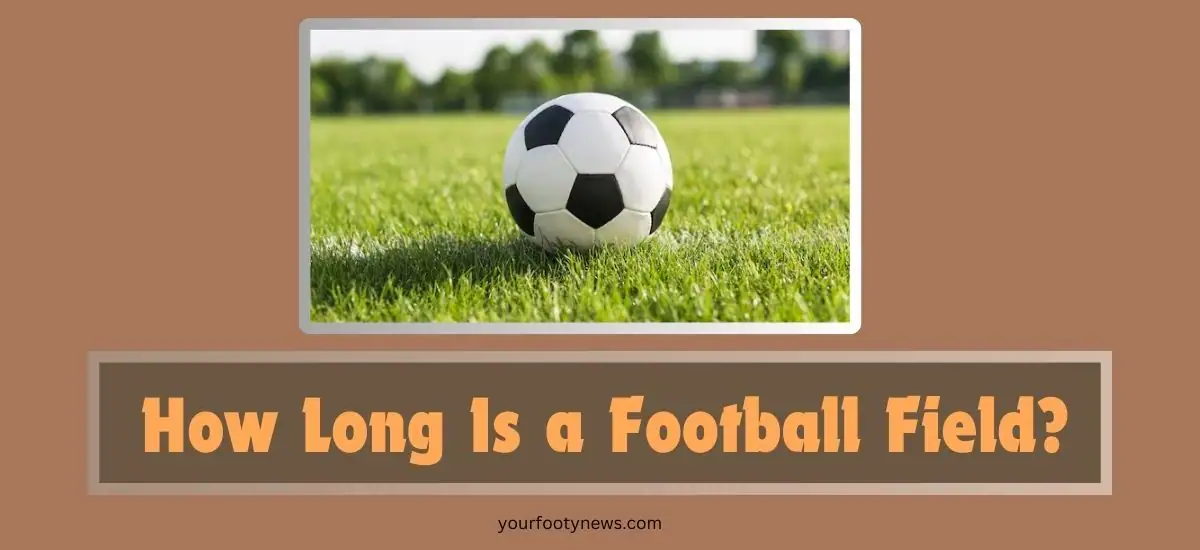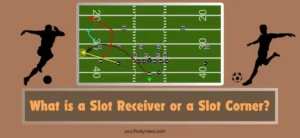
Football fields, whether for American football, soccer, Canadian football, or even rugby, have crucial dimensions. Understanding these dimensions helps us appreciate the game better and highlights how the field layout impacts gameplay. This article delves into the standard dimensions that are of various football fields, their unique features, and their significance in sports.
Standard American Football Field Dimensions
Field Length and Width
- Standard Length: An American football field is 100 yards (91.44 meters) long from one goal line to the other.
- Width: The field is 53.3 yards (48.8 meters) wide.
- End Zones: Each end zone is 10 yards deep, making the total field length including end zones 120 yards (109.7 meters).
Markings and Lines
- Yard Lines: Marked every 5 yards across the field, these lines help measure progress during the game.
- Hash Marks: Located at 1-yard intervals, they are used to position the ball at the start of plays.
- Sidelines: Boundaries that define the width of the field.
- 50-Yard Line: The middle of the field, often a strategic point for plays.
- Goal Lines: Mark the beginning of each end zone.
Key American Football Field Dimensions
| Dimension | Measurement |
|---|---|
| Field Length | 100 yards (91.44 meters) |
| Field Width | 53.3 yards (48.8 meters) |
| End Zone Depth | 10 yards each (total field length: 120 yards) |
| Hash Marks Interval | 1 yard |
| Yard Lines Interval | 5 yards |
Soccer (Association Football) Field Dimensions
Field Length and Width
- Range of Lengths: 100-130 yards (90-120 meters).
- Range of Widths: 50-100 yards (45-90 meters).
- Standard Dimensions: For international matches, fields are typically 110-120 yards long and 70-80 yards wide.
- Professional Leagues: FIFA and MLS fields adhere to the standard dimensions for consistency.
Key Areas and Markings
- Penalty Area: The box in front of the goal where the goalkeeper can handle the ball, and where penalties are awarded.
- Goal Area: Smaller box inside the penalty area, used for goal kicks.
- Center Circle: Midfield mark where the game starts and restarts.
- Penalty Spot: Located 12 yards from the goal line for penalty kicks.
- Corner Arcs: Quarter-circle areas at each corner of the field for corner kicks.
Key Soccer Field Dimensions
| Dimension | Measurement |
|---|---|
| Field Length | 100-130 yards (90-120 meters) |
| Field Width | 50-100 yards (45-90 meters) |
| Penalty Area | 18 yards from the goal line |
| Goal Area | 6 yards from the goal line |
| Penalty Spot | 12 yards from the goal line |
Canadian Football Field Dimensions
Field Length and Width
- Length: 110 yards long.
- Width: 65 yards wide.
- End Zones: Each end zone extends 20 yards deep, making the total field length including end zones 150 yards.
Unique Features
- Field Markings: Similar to American football but with a larger field, impacting gameplay and strategies.
- Goalpost Placement: Positioned at the front of the end zone, unlike American football where they are at the back.
Key Canadian Football Field Dimensions
| Dimension | Measurement |
|---|---|
| Field Length | 110 yards |
| Field Width | 65 yards |
| End Zone Depth | 20 yards each (total field length: 150 yards) |
| Goalpost Placement | Front of the end zone |
Rugby Field Dimensions (Bonus)
Field Length and Width
- Standard Length: A rugby field is typically 100 meters long.
- Width: The field is generally 70 meters wide.
- In-Goal Areas: These areas can range from 10 to 22 meters deep, providing space for scoring tries.
Key Markings and Features
- Halfway Line: Divides the field into two equal halves.
- 22-Meter Lines: Mark 22 meters from each end goal line, often a strategic area for kick placement.
- Try Lines: The goal lines at each end of the field where points are scored.
- Goalposts: Located on the try lines, used for conversions and penalty kicks.
Key Rugby Field Dimensions
| Dimension | Measurement |
|---|---|
| Field Length | 100 meters |
| Field Width | 70 meters |
| In-Goal Area Depth | 10-22 meters |
| 22-Meter Line | 22 meters from try line |
Understanding the Impact of Field Dimensions
How Field Size Affects Gameplay and Strategies
- Player Movement: Larger fields (like those in Canadian football) require players to cover more ground, impacting endurance and strategy.
- Game Pace: Smaller fields (such as in American football) can lead to faster, more intense gameplay with frequent stoppages.
- Tactics: Teams adjust their tactics based on field size; for example, wider soccer fields enable more wing play and crossing opportunities.
Differences in Player Positions and Roles Based on Field Dimensions
- American Football: Positions like wide receiver and cornerback are heavily influenced by the width and layout of the field.
- Soccer: Midfielders benefit from larger fields that allow for more strategic passing and movement.
- Rugby: The depth of the in-goal areas affects how teams approach scoring tries and defending.
Adaptations Teams Make for Different Field Sizes in International Play
- Training Adjustments: Teams often train on fields that mimic the dimensions they will encounter in international play.
- Tactical Shifts: Coaches may alter formations and strategies to exploit the characteristics of different field sizes.
Impact of Field Dimensions on Gameplay
| Factor | American Football | Soccer | Canadian Football | Rugby |
|---|---|---|---|---|
| Field Size Effect | Intense, frequent stoppages | Strategic movement, wing play | More ground to cover | Endurance and scoring strategies |
| Player Movement | Quick, explosive | Continuous, strategic | High endurance | Continuous play |
| Tactical Adjustments | Formation changes | Passing, wing utilization | Formation changes | Try scoring approaches |
Frequently Asked Questions About Football Field Dimensions
Common Questions
- What are the standard dimensions of a soccer field?
- A standard soccer field is typically 110-120 yards long and 70-80 yards wide.
- How long is a Canadian football field including end zones?
- A Canadian football field is 150 yards long, including the 20-yard deep end zones.
- Why do rugby fields have variable in-goal areas?
- The variability in in-goal areas (10 to 22 meters) allows for flexibility in stadium design and can influence scoring strategies.
Clarification on Variations in Field Dimensions Across Different Levels of Play
- Youth and Amateur Levels: Fields at these levels may have slightly different dimensions to accommodate younger players and smaller facilities.
- Professional Leagues: Adhere to standardized dimensions set by governing bodies like FIFA, NFL, and CFL to ensure consistency.
Insights into the Standardization of Field Dimensions
- Regulatory Bodies: Organizations like FIFA, NFL, and World Rugby establish field dimensions to maintain fairness and uniformity in the sport.
- Consistency Across Competitions: Standardized dimensions ensure that teams compete on equal footing, regardless of location.
Frequently Asked Questions
| Question | Answer |
|---|---|
| Standard dimensions of a soccer field | 110-120 yards long, 70-80 yards wide |
| Length of a Canadian football field | 150 yards, including end zones |
| Variable in-goal areas in rugby | 10 to 22 meters |
| Variations in youth/amateur levels | Slightly different dimensions for younger players |
| Role of regulatory bodies in standardization | Ensure consistency and fairness across competitions |
Conclusion
Recap of Key Points About Football Field Dimensions
Understanding the dimensions of various football fields provides insight into how the layout influences gameplay, strategy, and player roles. Each type of football, from American and Canadian to soccer and rugby, has unique field characteristics that shape the way the game is played.
Read more: What Is a Tight End in Football?
Final Thoughts on the Importance of Standardized Field Sizes
Standardized field dimensions are crucial for maintaining fair competition and ensuring that teams can compete on equal terms. These standards also help in the development of consistent training methods and strategies.
Call to Action
Explore different football fields and observe how their unique characteristics impact the games played on them. Whether you’re watching a local match or an international competition, understanding the field dimensions can enhance your appreciation for the sport.
Summary of Football Field Dimensions
| Football Type | Standard Length | Standard Width | Unique Features |
|---|---|---|---|
| American Football | 100 yards | 53.3 yards | End zones 10 yards deep, hash marks |
| Soccer | 110-120 yards | 70-80 yards | Penalty area, goal area, penalty spot |
| Canadian Football | 110 yards | 65 yards | End zones 20 yards deep, goalpost placement at front |
| Rugby | 100 meters | 70 meters | In-goal areas 10-22 meters deep, 22-meter lines, try lines |
By diving deeper into the specifics of football field dimensions, you can gain a greater understanding of the game’s nuances and enjoy the sport on a whole new level.








